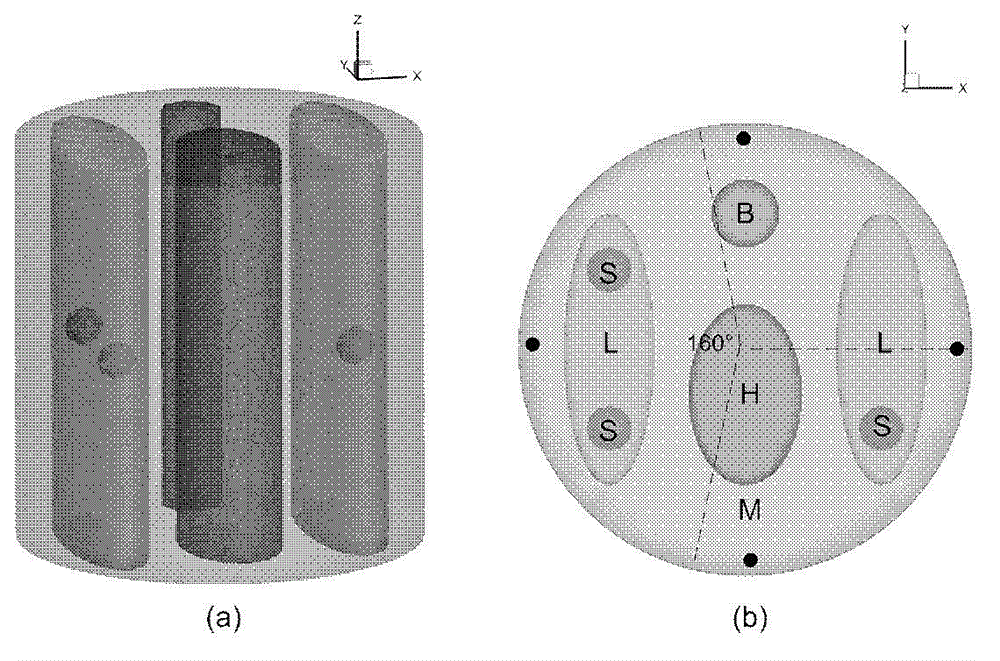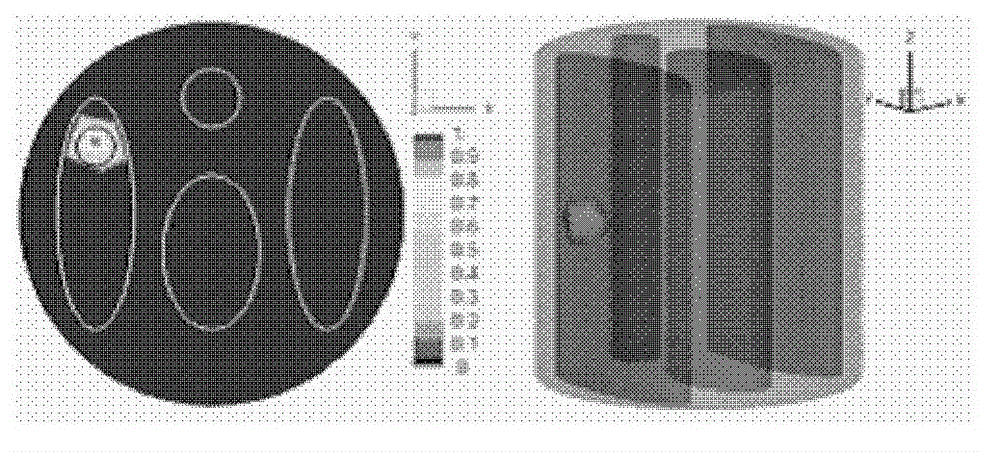Adaptive tomographic fluorescence imaging (TFI) reconstructing method
A tomographic and self-adaptive technology, applied in the directions of diagnosis, application, diagnostic recording/measurement, etc., to achieve the effect of improving reconstruction efficiency and improving robustness
- Summary
- Abstract
- Description
- Claims
- Application Information
AI Technical Summary
Problems solved by technology
Method used
Image
Examples
Embodiment Construction
[0019] The reconstruction method of the present invention will be described in detail below in conjunction with the accompanying drawings. It should be noted that the described embodiments are only intended to facilitate the understanding of the present invention, and have no limiting effect on it.
[0020] figure 1 Is the overall flow of the reconstruction method of the present invention:
[0021] Step 101: The present invention adopts the diffusion equation as the TFI imaging model, and the model includes two coupled diffusion equations of the excitation process and the emission process. By using the finite element method, the diffusion equation can be discretized for subsequent processing;
[0022] Step 102: For the TFI inverse problem, the surface fluorescence distribution is known, but the internal fluorescence light source distribution is unknown. By performing matrix transformation on the discretized diffusion model, the relationship between the surface measurement data...
PUM
 Login to View More
Login to View More Abstract
Description
Claims
Application Information
 Login to View More
Login to View More - R&D
- Intellectual Property
- Life Sciences
- Materials
- Tech Scout
- Unparalleled Data Quality
- Higher Quality Content
- 60% Fewer Hallucinations
Browse by: Latest US Patents, China's latest patents, Technical Efficacy Thesaurus, Application Domain, Technology Topic, Popular Technical Reports.
© 2025 PatSnap. All rights reserved.Legal|Privacy policy|Modern Slavery Act Transparency Statement|Sitemap|About US| Contact US: help@patsnap.com



